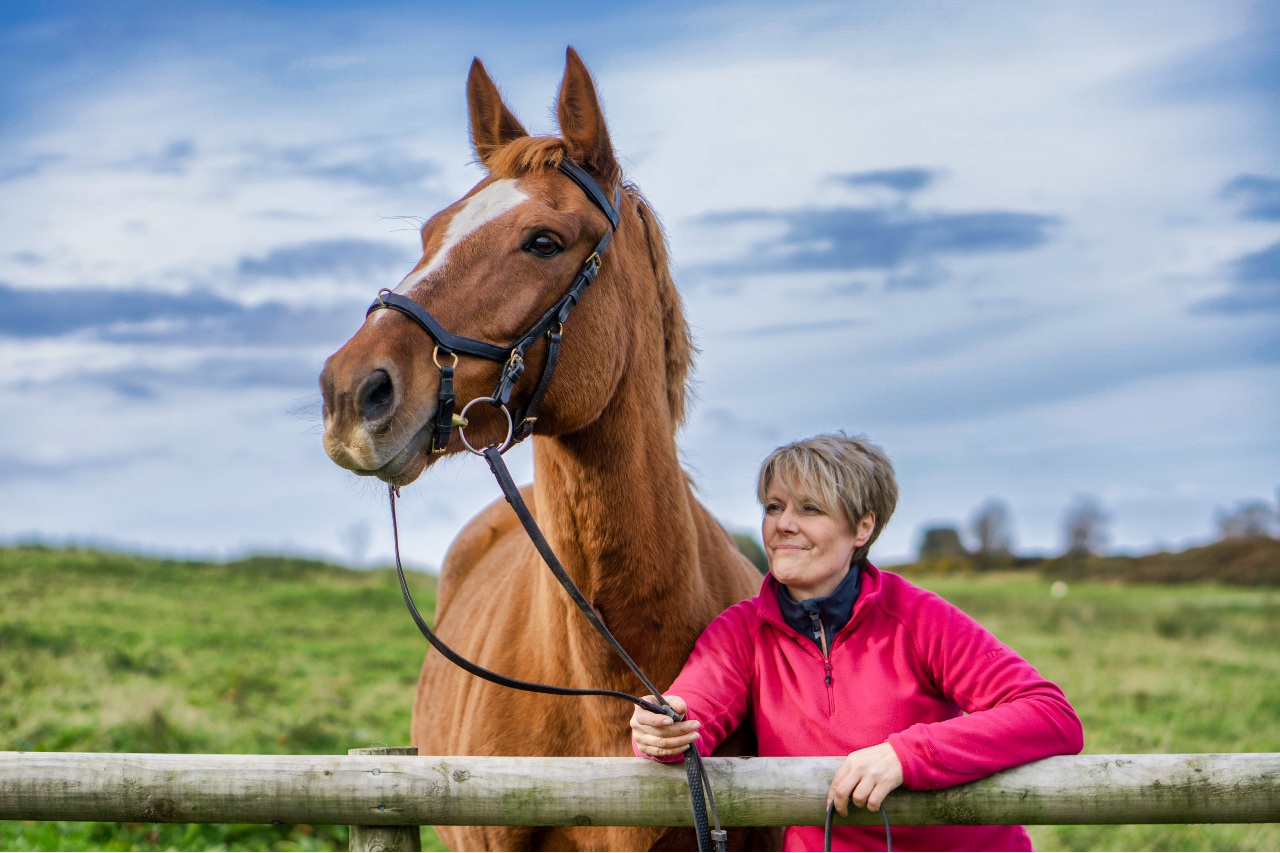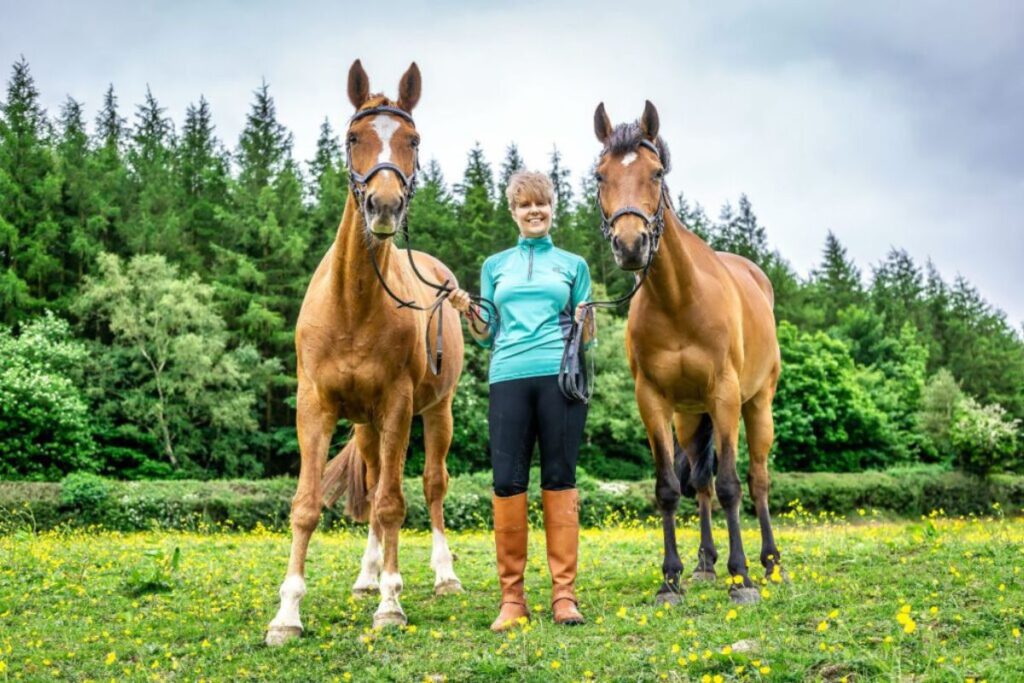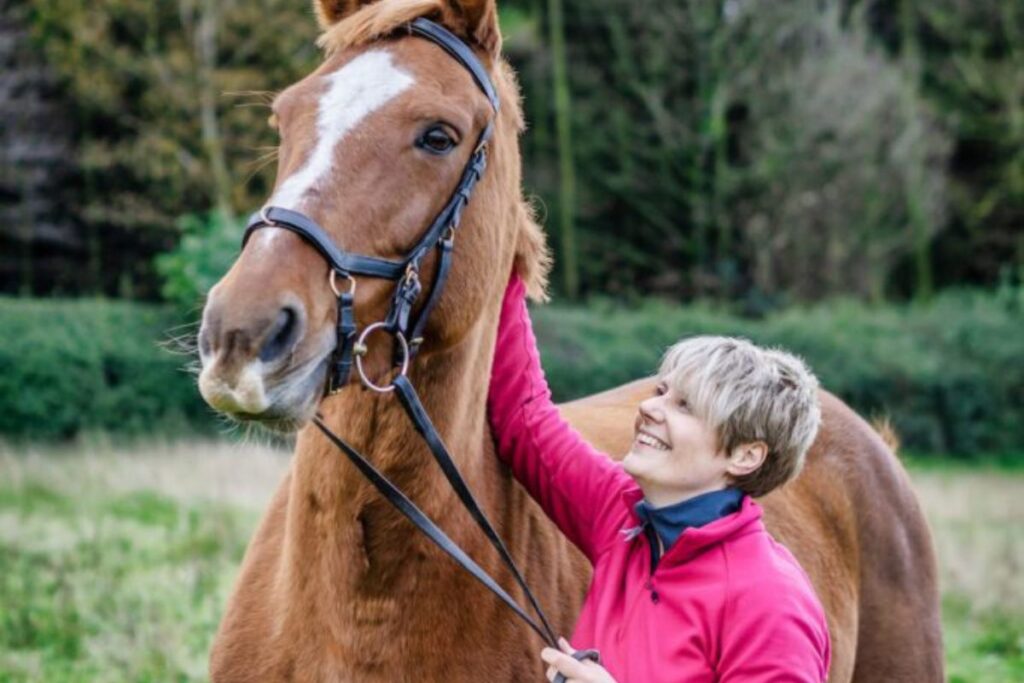Menu

Have you ever learned a new technique in your riding and found your nerves around it prevented you doing as well as you had hoped? Have you ever struggled with your confidence, even when you’re doing something you’ve done many times before? If you’ve tried reading books, looking online, or other forms of self-directed help and found they’ve not worked, Dr. Tracey Cole’s style of coaching could be the solution for removing your mental roadblocks.
Dr. Tracey Cole is an equestrian mindset expert. Her work has helped many 100s of clients over the years to use strategies to take control of their unconscious minds and get out of their own ways.
Using a combination of techniques from different, but complementary disciplines, Tracey works with equestrians at any stage of their career. You could also be looking to improve any part of your equestrian life. This could be your riding performance, or you could be an equestrian coach, riding instructor, or running an equestrian business.
Tracey is a trained scientist with a BSc and PhD in Biochemistry. Her first career was as a chemistry teacher in English secondary schools. She first heard of neuro-linguistic programming (NLP) in her search for ways to support her students.
“Having competed as a showjumper, I was used to dealing with nerves. Even in training sessions, I would find my nerves were getting the better of me. And not only were the nerves holding me back from progressing, but I also felt terribly embarrassed.”
Reading Pippa Funnell’s autobiography, NLP was mentioned there too. This piqued Tracey’s interest once again. As she researched more about NLP, her scientific mind caused her to doubt how and if it could work. Tracey describes herself as “the ultimate sceptic”.
“When I saw the opportunity to train as a practitioner, it seemed like the best way to learn the mechanics of the technique. On that course, I felt that if learning these techniques could help my own nerves then that would be lovely, but I didn’t think it would.”

As the course continued, Tracey enjoyed the practical applications of the NLP strategies. Her scientific mind felt appeased.
At Tracey’s training sessions, she realised that she had started feeling differently. She practised the NLP strategies she was learning about how to remove her own mental roadblocks.
When she next faced a show-jumping test, Tracey searched internally for the nerves and found they had gone.
“It was such an unusual feeling, and I was very surprised. Delighted, but surprised, nevertheless”
Dr. Tracey Cole
Anyone who knows a teacher, works as one, or has done in the past, knows just how much pressure those within the profession are under. Regardless, Tracey wanted to help others breakthrough their riding difficulties, just as she had. Her passion for the techniques led to her coaching equestrians part-time on top of her full-time teaching job.
As Tracey’s reputation spread, the demand for her support grew. She said goodbye to the school kids and set up her own practise. Her continued studies meant she now had a range of strategies to employ with her clients.
You may also like to read: Teacher and rider: Why you should never compare yourself to others
Somebody riding at any level or discipline can be helped with this type of coaching. Those factors are immaterial compared to the mindset. Doubt and limiting beliefs create a negative feeling that is the same, regardless of the external elements.
Because it is in the mind, Tracey doesn’t have to be in the same room as her clients, or even on the same continent. It is not an experience akin to working with a riding instructor, for example, where you would more than likely be in the yard together.
“The unconscious mind doesn’t know the difference between imagination and reality”
Dr. Tracey Cole
“Using Zoom and similar methods, my clients can be guided to develop new neural pathways within their minds, regardless of the environment," Tracey explains.
NLP is a means of communicating to our minds what we want and getting the mind to support us fully. It's a selection of concepts and techniques cherry-picked from psychological, behavioural sciences, therapy, and hypnosis.
Time Line Therapy® is a set of powerful techniques that work on stress, depression, anxiety, emotional issues, limiting beliefs and trauma. It's geared towards alleviating self-confidence and self-esteem challenges too. We find the root cause to the problem and work to release the negative emotion. The theory is, that negative emotions are stored in the unconscious mind, until we learn from the event. In Time Line Therapy®, recovery of the lessons to be learnt releases the emotion.
This type of therapy has come out of a mix of NLP and hypnosis techniques. You’re awake for the conversation, imagining things as guided by the practitioner. The popularity of Time Line Therapy® comes from its effectiveness whilst being a gentle practice. You don’t enter the bad memories. By the work being content-free, you’re not having to relive the negative experiences.
Hypnosis or hypnotherapy work by relaxing the body and allowing the mind to take on suggestions, without the criticism or resistance that the logical conscious mind may have. In this way, we by-pass the conscious mind and get to the heart of the problem, in the unconscious mind. This technique can help alleviate symptoms of clinical issues, which means anything that has a physical impact upon the body.
Every session, simply, starts with the client. A discovery call allows Tracey to uncover the mental roadblocks the client is experiencing.
“I can receive very detailed emails from prospective clients. This isn’t necessary however, as it’s not the specifics I require,” she says.
Using nerves as an example, Tracey would want to know the situation that those feelings appear. Is it a week before a dressage test? Is it when you receive the dressage times? Aside from these details, thanks to Tracey’s training and experience, she can identify a client’s limitations from the words they use. Their limitations are expressed without them even knowing it.
“From my toolbox of techniques, I will then choose one that will create the biggest change and then focus on other specifics from there. In an hour’s session, I usually employ around 4 to 5 strategies. If the reason for the session is a riding issue, not work/home/past issues, just one session will give you techniques to practise that will change your mindset. If your external circumstances change, you may then return for another session,” Tracey explains.
You could be looking to increase your performance, develop your skills, or level up in some way. It all depends on the individual, their openness, and their willingness to practise the new techniques. For amateur or recreational riders, other issues can come out. Then, 3 to 5 sessions may be more appropriate.

1. Zooming
This technique removes your charged feelings for a certain scenario. It can be used to stop overthinking. When you think about that negative scenario do you have a picture in your mind's eye?
Now, how do you feel about that scenario ?
2. Periphiral vision
When we are in full peripheral vision, our brain cannot experience a negative feeling. This is a great technique to do at anytime, to calm nerves and minor negative thoughts; practise off the horse and then start to practise whilst riding in halt, then walk. When you feel confident, try it for half a lap of the arena, then a full lap. Then build up to other gaits and activities.
Although Tracey’s specialism is working with equestrians, everyone is welcome. If, on the discovery call, it’s clear that Tracey would not be able to help, she will talk with you about that and try to signpost you to more suitable solutions.
Should you be struggling with your mindset in your riding, equestrian business, or any other part of life, investing in yourself is likely to unlock your potential in ways you can hardly perceive right now.
Reach out and talk to someone if you are struggling with your mental health in any way. As hard as that can be to do, it’s always worth it.
You can find out more about Tracey from her website: traceycolenlp.com and follow her on Instagram, Twitter and Facebook.